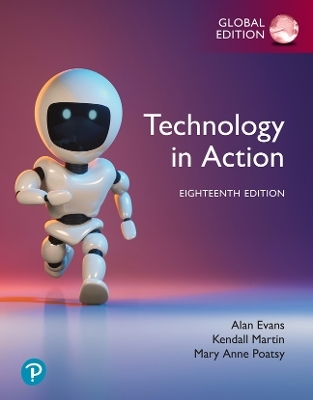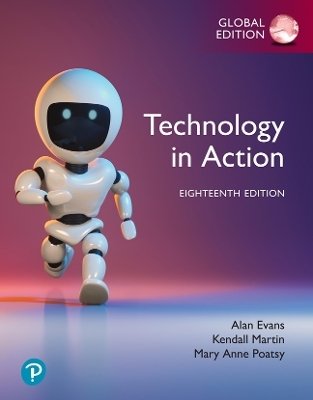
Foundations of Fuzzy Control – A Practical Approach 2e
John Wiley & Sons Inc (Hersteller)
978-1-118-53560-8 (ISBN)
- Keine Verlagsinformationen verfügbar
- Artikel merken
Jan Jantzen, Adjunct Professor, University of the Aegean, Greece As a follow-up on the pioneering work by Holmblad and Ostergaard on cement kiln control, Dr Jantzen taught a course on fuzzy control at the Technical University of Denmark (starting 1986). He has participated in the development of a fuzzy controller for a 600 kilowatt screw chiller and a fuzzy idle speed controller for a car engine. At the university he supervised numerous student projects in the process industry, and he teaches a fuzzy control course over the Internet to students and practitioners (www.inference.dk). He also teaches a course on fuzzy logic and intelligent computers at the University of the Aegean, Chios island, Greece (since 2003). Dr Jantzen lives on the island of Samso, Denmark, and he works at the Samso Energy Academy with renewable energy, particularly for European islands.
Foreword xiii Preface to the Second Edition xv Preface to the First Edition xvii 1Introduction 1 1.1 What Is Fuzzy Control? 1 1.2 Why Fuzzy Control? 2 1.3 Controller Design 3 1.4 Introductory Example: Stopping a Car 3 1.5 Nonlinear Control Systems 9 1.6 Summary 11 1.7 The Autopilot Simulator* 12 1.8 Notes and References* 13 2 Fuzzy Reasoning 17 2.1 Fuzzy Sets 17 2.1.1 Classical Sets 18 2.1.2 Fuzzy Sets 19 2.1.3 Universe 21 2.1.4 Membership Function 22 2.1.5 Possibility 24 2.2 Fuzzy Set Operations 25 2.2.1 Union, Intersection, and Complement 25 2.2.2 Linguistic Variables 28 2.2.3 Relations 30 2.3 Fuzzy If--Then Rules 33 2.3.1 Several Rules 35 2.4 Fuzzy Logic 36 2.4.1 Truth-Values 36 2.4.2 Classical Connectives 36 2.4.3 Fuzzy Connectives 39 2.4.4 Triangular Norms 41 2.5 Summary 43 2.6 Theoretical Fuzzy Logic* 43 2.6.1 Tautologies 43 2.6.2 Fuzzy Implication 45 2.6.3 Rules of Inference 48 2.6.4 Generalized Modus Ponens 51 2.7 Notes and References* 53 3 Fuzzy Control 55 3.1 The Rule Based Controller 56 3.1.1 Rule Base Block 56 3.1.2 Inference Engine Block 58 3.2 The Sugeno Controller 61 3.3 Autopilot Example: Four Rules 64 3.4 Table Based Controller 65 3.5 Linear Fuzzy Controller 68 3.6 Summary 70 3.7 Other Controller Components* 70 3.7.1 Controller Components 70 3.8 Other Rule Based Controllers* 77 3.8.1 The Mamdani Controller 77 3.8.2 The FLS Controller 79 3.9 Analytical Simplification of the Inference* 80 3.9.1 Four Rules 81 3.9.2 Nine Rules 82 3.10 Notes and References* 84 4 Linear Fuzzy PID Control 85 4.1 Fuzzy P Controller 87 4.2 Fuzzy PD Controller 89 4.3 Fuzzy PD+I Controller 90 4.4 Fuzzy Incremental Controller 92 4.5 Tuning 94 4.5.1 Ziegler--Nichols Tuning 94 4.5.2 Hand-Tuning 96 4.5.3 Scaling 99 4.6 Simulation Example: Third-Order Process 99 4.7 Autopilot Example: Stable Equilibrium 101 4.7.1 Result 102 4.8 Summary 103 4.9 Derivative Spikes and Integrator Windup* 104 4.9.1 Setpoint Weighting 104 4.9.2 Filtered Derivative 105 4.9.3 Anti-Windup 106 4.10 PID Loop Shaping* 106 4.11 Notes and References* 109 5 Nonlinear Fuzzy PID Control 111 5.1 Nonlinear Components 111 5.2 Phase Plot 113 5.3 Four Standard Control Surfaces 115 5.4 Fine-Tuning 118 5.4.1 Saturation in the Universes 119 5.4.2 Limit Cycle 119 5.4.3 Quantization 120 5.4.4 Noise 120 5.5 Example: Unstable Frictionless Vehicle 121 5.6 Example: Nonlinear Valve Compensator 124 5.7 Example: Motor Actuator with Limits 127 5.8 Autopilot Example: Regulating a Mass Load 127 5.9 Summary 130 5.10 Phase Plane Analysis* 130 5.10.1 Trajectory in the Phase Plane 131 5.10.2 Equilibrium Point 132 5.10.3 Stability 132 5.11 Geometric Interpretation of the PD Controller* 134 5.11.1 The Switching Line 137 5.11.2 A Rule Base for Switching 140 5.12 Notes and References* 143 6 The Self-Organizing Controller 145 6.1 Model Reference Adaptive Systems 145 6.2 The Original SOC 147 6.2.1 Adaptation Law 148 6.3 A Modified SOC 150 6.4 Example with a Long Deadtime 151 6.4.1 Tuning 151 6.4.2 Adaptation 153 6.4.3 Performance 153 6.5 Tuning and Time Lock 155 6.5.1 Tuning of the SOC Parameters 155 6.5.2 Time Lock 156 6.6 Summary 157 6.7 Example: Adaptive Control of a First-Order Process* 157 6.7.1 The MIT Rule 158 6.7.2 Choice of Control Law 159 6.7.3 Choice of Adaptation Law 159 6.7.4 Convergence 160 6.8 Analytical Derivation of the SOC Adaptation Law* 161 6.8.1 Reference Model 162 6.8.2 Adjustment Mechanism 162 6.8.3 The Fuzzy Controller 165 6.9 Notes and References* 169 7 Performance and Relative Stability 171 7.1 Reference Model 172 7.2 Performance Measures 177 7.3 PID Tuning from Performance Specifications 180 7.4 Gain Margin and Delay Margin 185 7.5 Test of Four Difficult Processes 186 7.5.1 Higher-Order Process 186 7.5.2 Double Integrator Process 187 7.5.3 Process with a Long Time Delay 188 7.5.4 Process with Oscillatory Modes 188 7.6 The Nyquist Criterion for Stability 188 7.6.1 Absolute Stability 189 7.6.2 Relative Stability 190 7.7 Relative Stability of the Standard Control Surfaces 191 7.8 Summary 193 7.9 Describing Functions* 193 7.9.1 Static Nonlinearity 195 7.9.2 Limit Cycle 197 7.10 Frequency Responses of the FPD and FPD+I Controllers* 198 7.10.1 FPD Frequency Response with a Linear Control Surface 200 7.10.2 FPD Frequency Response with Nonlinear Control Surfaces 201 7.10.3 The Fuzzy PD+I Controller 203 7.10.4 Limit Cycle 204 7.11 Analytical Derivation of Describing Functions for the Standard Surfaces* 206 7.11.1 Saturation Surface 206 7.11.2 Deadzone Surface 209 7.11.3 Quantizer Surface 213 7.12 Notes and References* 216 8 Fuzzy Gain Scheduling Control 217 8.1 Point Designs and Interpolation 218 8.2 Fuzzy Gain Scheduling 219 8.3 Fuzzy Compensator Design 221 8.4 Autopilot Example: Stopping on a Hilltop 226 8.5 Summary 228 8.6 Case Study: the FLS Controller* 229 8.6.1 Cement Kiln Control 229 8.6.2 High-Level Fuzzy Control 231 8.6.3 The FLS Design Procedure 233 8.7 Notes and References* 235 9 Fuzzy Models 237 9.1 Basis Function Architecture 238 9.2 Handmade Models 240 9.2.1 Approximating a Curve 240 9.2.2 Approximating a Surface 244 9.3 Machine-Made Models 249 9.3.1 Least-Squares Line Fit 249 9.3.2 Least-Squares Basis Function Fit 250 9.4 Cluster Analysis 253 9.4.1 Mahalanobis Distance 253 9.4.2 Hard Clusters, HCM Algorithm 257 9.4.3 Fuzzy Clusters, FCM Algorithm 260 9.5 Training and Testing 263 9.6 Summary 266 9.7 Neuro-Fuzzy Models* 267 9.7.1 Neural Networks 267 9.7.2 Gradient Descent Algorithm 268 9.7.3 Adaptive Neuro-Fuzzy Inference System (ANFIS) 273 9.8 Notes and References* 275 10 Demonstration Examples 277 10.1 Hot Water Heater 277 10.1.1 Installing a Timer Switch 278 10.1.2 Fuzzy P Controller 280 10.2 Temperature Control of a Tank Reactor 282 10.2.1 CSTR Model 283 10.2.2 Results and Discussion 285 10.3 Idle Speed Control of a Car Engine 287 10.3.1 Engine Model 287 10.3.2 Results and Discussion 288 10.4 Balancing a Ball on a Cart 292 10.4.1 Mathematical Model 293 10.4.2 Step 1: Design a Crisp PD Controller 297 10.4.3 Step 2: Replace it with a Linear Fuzzy 300 10.4.4 Step 3: Make it Nonlinear 300 10.4.5 Step 4: Fine-Tune it 301 10.5 Dynamic Model of a First-Order Process with a Nonlinearity 301 10.5.1 Supervised Model 302 10.5.2 Semi-Automatic Identification by a Modified HCM 304 10.6 Summary 307 10.7 Further State-Space Analysis of the Cart-Ball System* 307 10.7.1 Nonlinear Equations 313 10.8 Notes and References* 314 References 315 Index 319
| Verlagsort | New York |
|---|---|
| Sprache | englisch |
| Maße | 150 x 250 mm |
| Gewicht | 666 g |
| Themenwelt | Mathematik / Informatik ► Informatik |
| Technik ► Elektrotechnik / Energietechnik | |
| ISBN-10 | 1-118-53560-X / 111853560X |
| ISBN-13 | 978-1-118-53560-8 / 9781118535608 |
| Zustand | Neuware |
| Informationen gemäß Produktsicherheitsverordnung (GPSR) | |
| Haben Sie eine Frage zum Produkt? |
aus dem Bereich


